Rock
Elemental. Substantial. Timeless. The siting and placement of stone is critical. Each carefully selected rock is partially buried so that it appears to "have always been there", then maneuvered so that its best side faces the viewer. While upright boulders add drama and excitement, low, rounded forms "ground" the garden.
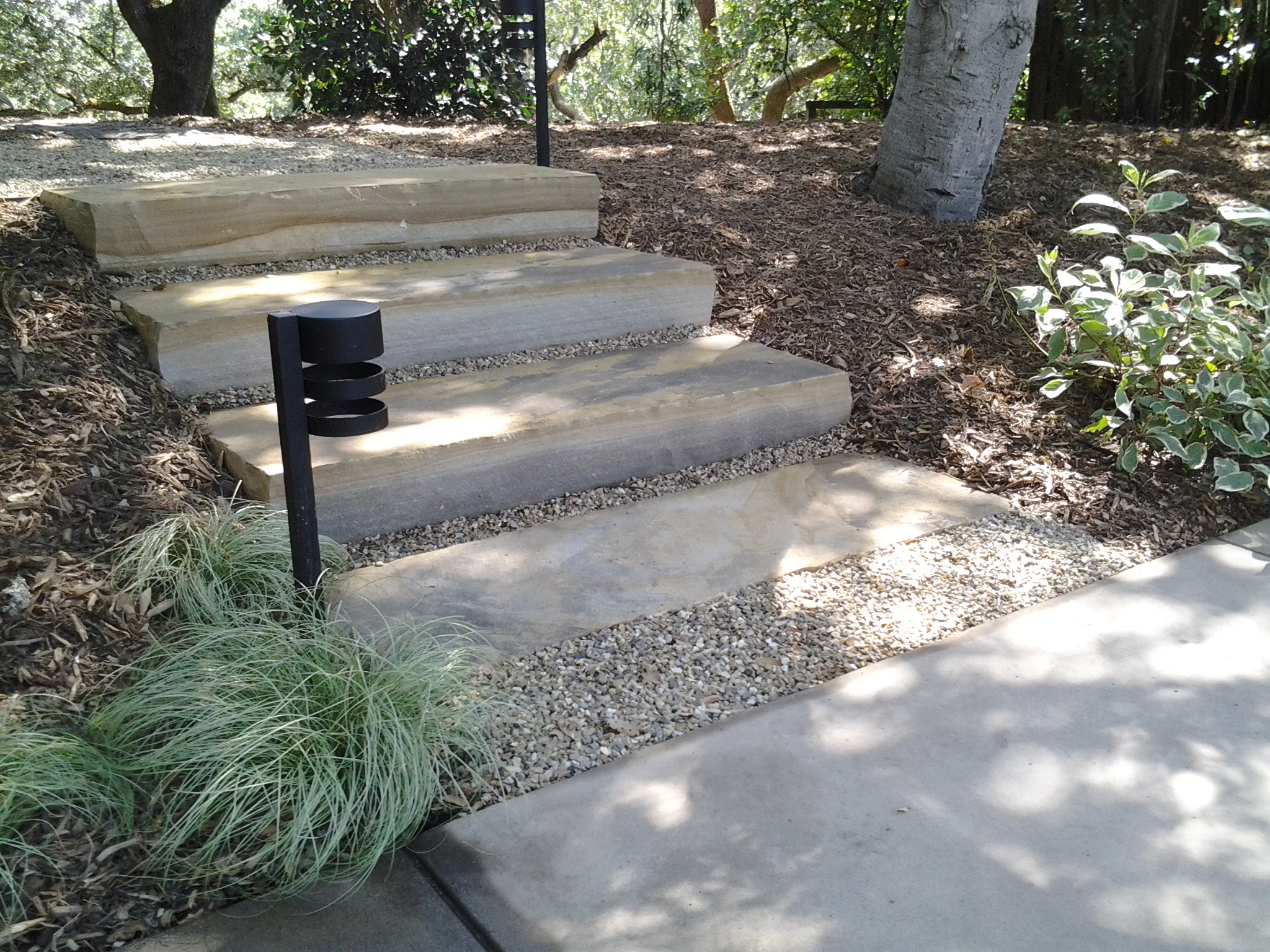
"Dakota steps" are an elegant alternative to the " railroad tie" aesthetic

No red lava rock allowed! The use of bold rock mulches from "H and M" Landscape Supply in Santa Rosa create the ultimate "xeriscape"
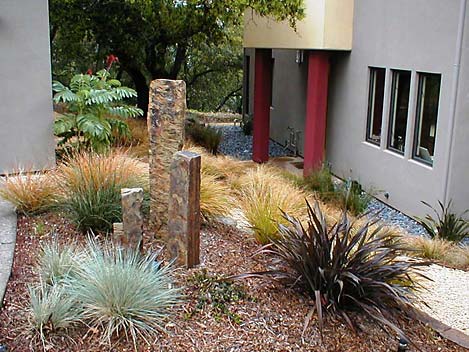
A trio of upright pillar stones echo the vertical lines of this home designed by House and House. The clean forms of modern architecture demand a corresponding simplicity in the surrounding landscape. This is not the house for the “cottage garden” look!
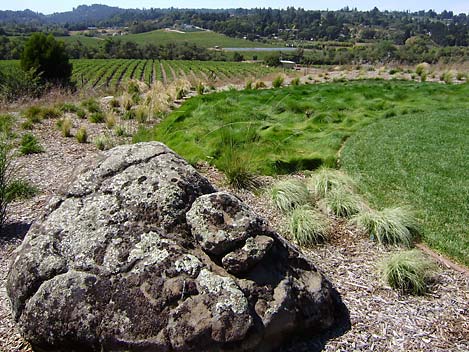
Nothing says “here” like a giant rock. In this case, the boulder serves as foreground to offset a perfect Sebastopol West County vista

It is hard to believe that this is a completely artificial, manmade creekbed
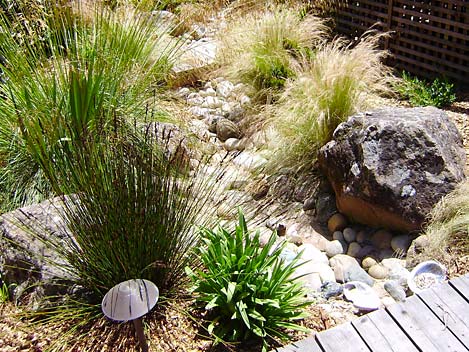
Note the bridge. This dry creekbed serves as a functioning drainage channel in the rainy season.

The placement of each boulder, stone and pebble in a dry creekbed is critical. The study of natural streambeds informs this manmade drainage swale.

Beauty is in the eye of the beholder. This rusted culvert fragment was rescued from a roadside trash heap.
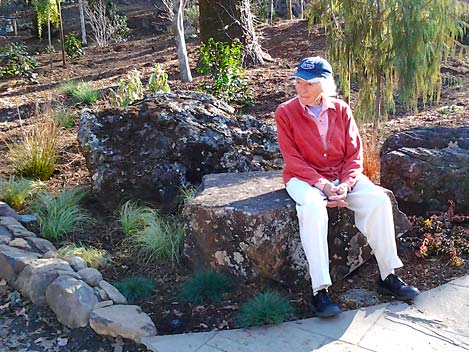
A flat, well-placed boulder invites us to pause for a rest
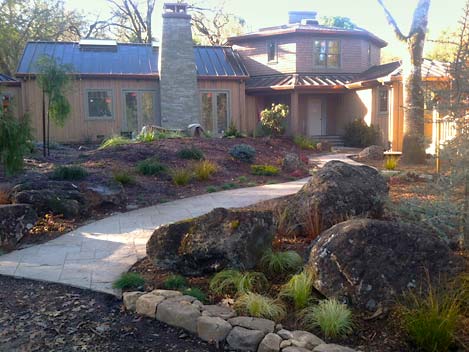
A harmonious blend of three types of stone: Connecticut bluestone paving, a low wall using native rock (“mined” on site), and “Sonoma fieldstone” boulders
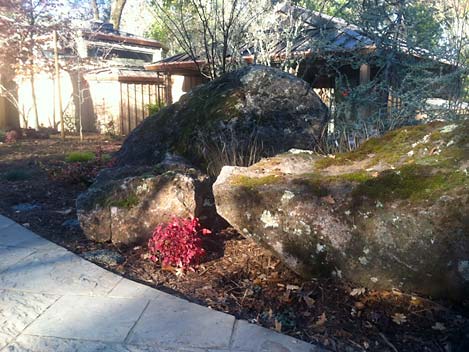
Moss on rocks greens up with the first rain



